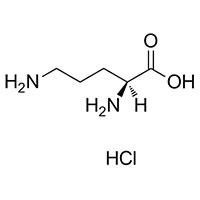L(+)-Ornithine Hydrochloride
Nanjing Finechem Holdings Co., LTD
Synonyms
L-Ornithine, monohydrochloride
H-Orn-OH.HCl
L-Orn hydrochloride
(2S)-2,5-diaminopentanoic acid hydrochloride
L-Ornithine monohydrochloride
L-Ornithine HCl
(S)-2,5-Diaminovaleric acid monohydrochloride
D-ORNITHINE HCL
L(+)-Ornithinehydrochloride
H-Orn-OH·HCl
(S)-2,5-Diaminopentanoic acid monohydrochloride
Product Description
L-ornithine hydrochloride is an amino acid supplement that is commonly used in the pharmaceutical and
nutraceutical industries. It is a salt of the amino acid ornithine, and it is often used to help promote
the health and function of the liver and immune system. In this analysis, we will explore the various
aspects of L-ornithine hydrochloride, including its medical uses, the pharmaceutical supply chain, and
the current market conditions.
Medical uses:
L-ornithine hydrochloride is used in several medical applications. One of its primary uses is as a
detoxification agent for the liver. The liver is responsible for filtering toxins out of the
bloodstream, and L-ornithine hydrochloride helps support the liver's natural detoxification
processes.
L-ornithine hydrochloride is also used in the treatment of hepatic encephalopathy, a condition in which
the liver is unable to remove toxins from the bloodstream, leading to brain damage. L-ornithine
hydrochloride helps to reduce the levels of ammonia in the bloodstream, which can help alleviate the
symptoms of hepatic encephalopathy.
Pharmaceutical supply chain:
L-ornithine hydrochloride is typically produced by chemical synthesis, starting from L-ornithine. The
raw materials for L-ornithine hydrochloride production are widely available, and the production process
is relatively straightforward, which makes it an attractive product for manufacturers.
The primary manufacturers of L-ornithine hydrochloride are based in China and Japan. These manufacturers
produce the product in bulk, which is then sold to pharmaceutical and nutraceutical companies for
further processing and packaging. L-ornithine hydrochloride is available in various forms, including
powders, capsules, and tablets.
Market conditions:
The market for L-ornithine hydrochloride is driven by the growing demand for natural and alternative
treatments for liver disease and related conditions. As a result, the demand for L-ornithine
hydrochloride has been steadily increasing over the past few years.
The current market for L-ornithine hydrochloride is dominated by Chinese and Japanese manufacturers, who
supply the majority of the product to the global market. However, there is increasing interest in the
product from manufacturers in other regions, including North America and Europe.
Conclusion:
L-ornithine hydrochloride is a versatile and important amino acid supplement that is widely used in the
pharmaceutical and nutraceutical industries. Its primary medical uses include promoting liver health and
treating hepatic encephalopathy. The product is primarily manufactured in China and Japan, and the
market for L-ornithine hydrochloride is expected to continue growing in the coming years.





